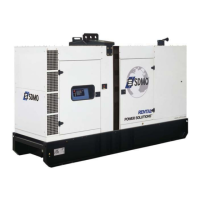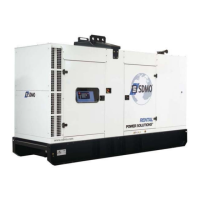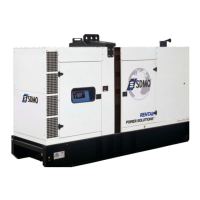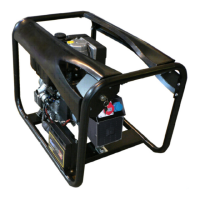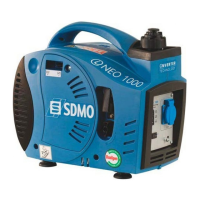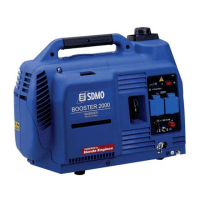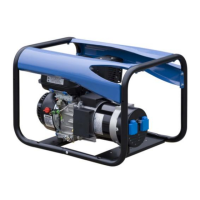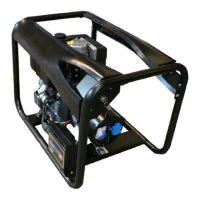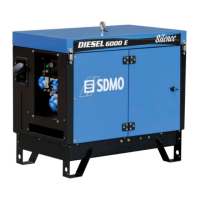2.5.2 Lubricant specifications
Essential for the correct operation of the engine. The oil should be selected according to its use. Besides the lubrication function, oil
should also:
- cool certain parts;
- protect metal parts against corrosion;
- improve the sealing, in particular between pistons, piston rings and cylinders;
- remove impurities (to the filter).
It is recommendable to use a top of the range lubricant for diesel engines. The table below lists the oils recommended for each engine
manufacturer.
Engine
Make Type Make Type
Cummins All GenPARTS GENLUB TDX 15W40
John Deere All
John Deere John Deere PLUS-50
GenPARTS GENLUB TDX 15W40
MTU All GenPARTS GENLUB TDX 15W40
Mitsubishi All GenPARTS GENLUB TDX 15W40
Perkins
Fuel GenPARTS GENLUB TDX 15W40
Gas MOBIL PEGASUS 705
Volvo All GenPARTS GENLUB TDX 15W40
Doosan All GenPARTS GENLUB TDX 15W40
Lombardini
Kohler
All
GenPARTS
or Kohler
GENLUB TDX 15W40 or Kohler 5W40,
according to the model of the engine
Viscosity
Viscosity is a measure of the flow resistance of a fluid. The viscosity of an engine oil is expressed by 2 SAE (Society of Automotive
Engineers) grades. One grade for cold weather and one grade for hot weather. The grade for cold weather appears before the letter W.
The 1st grade represents dynamic viscosity in cold weather, namely the ability to start the engine and to prime the oil pump (and
therefore to lubricate the various components quickly). The lower the number, the more fluid the oil.
The 2nd grade represents the kinematic viscosity in hot weather. The higher the number, the thicker the film of oil when hot (which aids
protection and sealing). The lower the number, the less friction there will be in hot weather (it helps to save fuel).
In order to ensure immediate protection when starting the engine, the choice of viscosity grade when cold is essential. More fluid oil is
quicker to flow when oil begins to circulate through the engine. It should be selected according to the ambient temperature. See the
table below.
